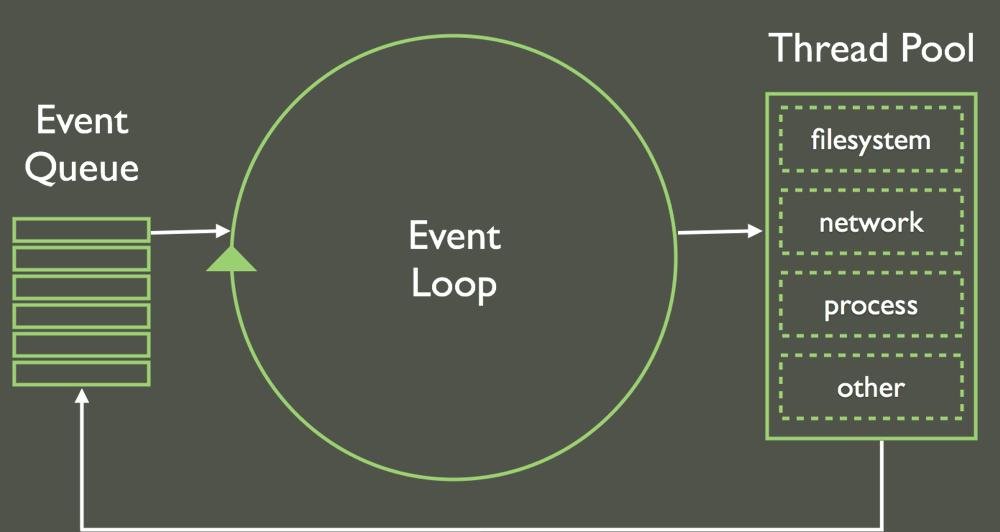Angular promises and http
JavaScript Async
The problem
The Solution
function loadPage{
$('#spinner').show();
setupPage();
$('#spinner').hide();
}function loadPage{
$('#spinner').show();
setTimeOut(function(){
setupPage();
$('#spinner').hide();
}, 0);
}The DOM manipulation tasks are not executed until this task's stack clears. The spinner isn't shown until setUp is completed.
Add a task to execute when this stack clears.
JavaScript needs Async
- JavaScript is single threaded (*mostly);
- Long running process will kill user experience:
- UI elements will be unresponsive;
- animations will pause
- Long running task will timeout;
Most I/O APIs are async:
- Ajax
- Web Workers, WebSQL, IndexedDb;
- Timers: setTimeout(), setInterval();
- Other APIs

- The Event Loop is a queue of callback functions;
- When an async function executes, the callback function is pushed into the queue;
- The JavaScript engine doesn't start processing the event loop until all the code was executed;
- The event loop is a first-in-first-out (FIFO) queue;
How to Write Async JavaScript
Naive Approach
Callbacks:
function doSomethingAsync(callBack){
setTimeout(function(){
//.....
callBack();
}, 200);
}
doSomethingAsync(function(){
//will be called after 200ms
});Callbacks Hell:
function doSomethingAsync(callBack){
//...
}
doSomethingAsync(function(result){
//...
doSomethingAsync(function(result){
//...
doSomethingAsync(function(result){
//...
});
});
});Better Approach
function doSomethingAsync(callBack){
//...
}
var promise = doSomethingAsync();
promise
.then(function(result){
//...
if(!ok) throw new Error();
return doSomethingAsync2();
})
.then(function(result2){
//...
}, function(reason){
// Handle the error
});Promises
What is a promise?
- A promise is always async;
- A promise represents a task that will finish in the future;
- A promise expose a function (then) :
- then returns a new promise;
- allows for the attachment of handlers that will be executed based on state;
- handlers are guaranteed to execute in order attached;
- Promises become resolved by a value;
- Promises get rejected by exceptions;
Promise states

Promises in Angular
$q service
Angular Promises
Angular uses promises for everything that is async:
- $timeout;
- $http;
- $routeProvider.when;
- much more.
Deferred API
//Service
function doSmth(){
defered = $q.defer();
asyncOperation(function(error, data){
if (!error) defered.resolve(data);
else defered.reject(error);
});
return defered.promise;
}
//Controller
doSmth().then(function(value){
console.log(value);
}, function(err){
console.error(err);
});
console.log("The value will be shown after this.");Result of $q.defer()
Angular promise API
Result of deffered.promise
doSmth()
.then(function(value){
return value + 10;
},
errorFn,
notifyFn)
.then(function(value){
return $q.reject(new Error());
})
.catch(function(err){
console.err(err);
})
.finally(callbackFn);Angular Server-side communication
$http service
$http
- core Angular service for communication with remote HTTP servers;
- can communicate via the browser's XMLHttpRequest or via JSONP;
- works hand in hand with $q service.
$http
The $http service is a function which takes a single argument — a configuration object — that is used to generate an HTTP request and returns a promise with two $http specific methods: success and error.
$http({method: 'GET', url: '/someUrl'})
.success(function(data, status, headers, config) {
// this callback will be called asynchronously
// when the response is available
})
.error(function(data, status, headers, config) {
// called asynchronously if an error occurs
// or server returns response with an error status.
});*Since the returned value is a promise, you can also use then() for registering callbacks.
$http shortcut methods
$http.get
$http.head
$http.post
$http.put
$http.delete
$http.jsonp
$http.patch